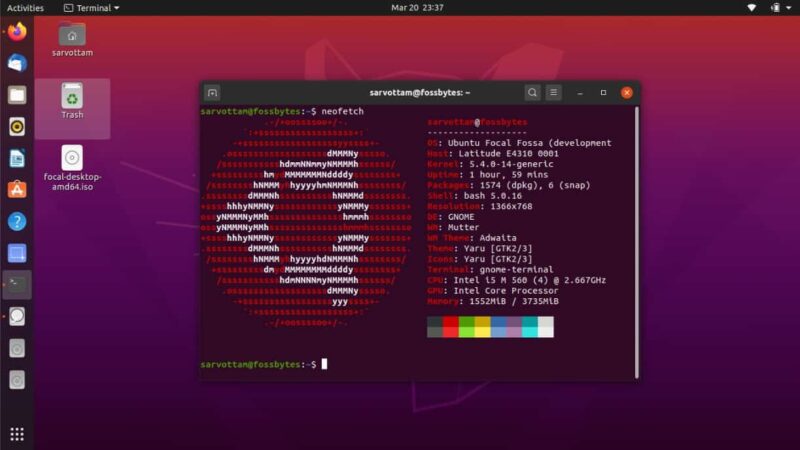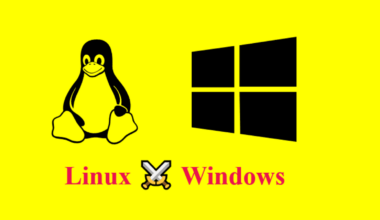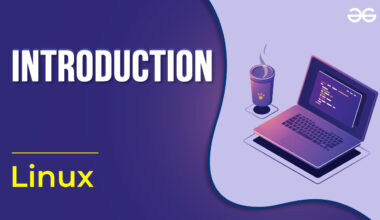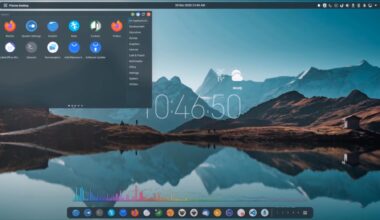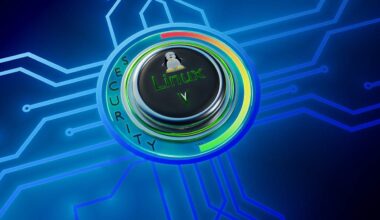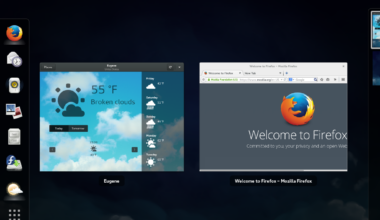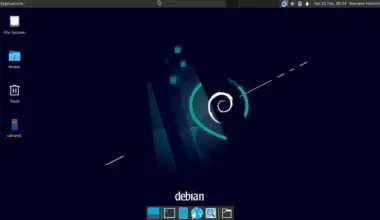Introduction: The Power of Linux Desktop for Programming
As a programmer, your choice of operating system can significantly impact your productivity, efficiency, and overall experience. While there are several operating systems out there, Linux desktop stands out as the ideal choice for programming. This is because Linux is an open-source operating system that allows programmers to customize their desktop environments to fit their unique needs. Additionally, Linux has several tools and features that make programming a breeze.
In this article, we will explore the power of Linux desktop for programming. We will discuss the different Linux distributions available for programmers, the customization and flexibility of Linux desktop, the package management and software availability, and the command-line tools for efficient programming. By the end of this article, you will understand why Linux desktop is the preferred operating system for programmers and how it can improve your programming experience. Let’s dive in!
Linux Distribution Options for Programmers
One of the many benefits of using Linux for programming is the wide range of Linux distributions available for programmers. Each distribution comes with its unique features, tools, and support. Here are some of the popular Linux distributions available for programmers:
1. Ubuntu: Ubuntu is one of the most popular Linux distributions for developers, thanks to its ease-of-use, frequent updates, and large community support. It comes with a vast library of packages, tools, and software that make it a perfect choice for programming.
2. Fedora: Fedora is a community-driven Linux distribution that is designed for developers, system administrators, and power users. It comes with the latest software and packages, making it a great choice for programmers who want to work with cutting-edge technology.
3. Arch Linux: Arch Linux is a minimalist Linux distribution that is designed for advanced users who want to customize their desktop environment. It comes with a rolling-release model, which means that users get the latest updates and packages as soon as they are available.
4. Debian: Debian is a stable and reliable Linux distribution that is ideal for developers who want a dependable and secure operating system. It comes with a vast library of packages and tools, making it a perfect choice for programming.
5. CentOS: CentOS is a community-driven Linux distribution that is designed for servers and enterprise-level applications. It is stable, secure, and comes with a vast library of packages and tools that make it a perfect choice for programming.
Each Linux distribution has its unique features and benefits. As a programmer, you need to choose a distribution that fits your needs and preferences. Whether you prefer a stable and reliable operating system or a cutting-edge and customizable desktop environment, there is a Linux distribution that is perfect for you.
In the next section, we will discuss the customization and flexibility of Linux desktop, which makes it an ideal choice for programmers.
Customization and Flexibility of Linux Desktop
One of the significant advantages of using Linux desktop for programming is its customization and flexibility. Linux allows programmers to customize their desktop environments to fit their unique needs, which can significantly improve their productivity and overall programming experience.
Linux desktop environments come in various flavors, such as GNOME, KDE, XFCE, and many more. Each environment has its unique features, layout, and design, which can be customized according to personal preferences. For example, you can change the color scheme, fonts, icons, and wallpaper to create a personalized desktop environment.
Moreover, Linux desktop environments come with several tools and features that make customization and flexibility a breeze. For instance, the GNOME Tweak Tool allows you to customize various aspects of the GNOME desktop, such as the appearance, extensions, and workspace behavior. The KDE System Settings also provide several customization options, such as desktop effects, window behavior, and input devices.
Apart from desktop environments, Linux also allows programmers to customize their terminal using various tools and utilities. For example, the Bash shell, which is the default shell in most Linux distributions, allows you to customize your prompt, aliases, and environment variables. The Zsh shell, which is an alternative to Bash, comes with several customization options, such as auto-completion, spelling correction, and syntax highlighting.
In addition to customization, Linux desktop also provides programmers with the flexibility to choose their preferred tools and software. Unlike other operating systems, Linux does not impose any restrictions on the software you can use. You can install and use any software, programming language, or tool without any limitations.
Furthermore, Linux provides programmers with several options to manage their software, such as package managers and software repositories. Package managers such as APT, YUM, and Pacman allow you to install, update, and remove software packages easily. Software repositories such as the Ubuntu Software Center and the Arch User Repository provide a vast library of software packages that you can install with a single click.
In conclusion, the customization and flexibility of Linux desktop make it an ideal choice for programmers. Linux allows programmers to create personalized desktop environments, customize their terminals, and choose their preferred tools and software without any limitations. With Linux, programmers can create a programming environment that suits their needs and preferences, which can significantly improve their productivity and overall programming experience.
Package Management and Software Availability
One of the essential features of Linux desktop for programming is its package management and software availability. Linux has a vast library of software packages and tools that are easily accessible and available for programmers. Moreover, Linux package managers make it easy to install, update, and remove software packages, which can save programmers a lot of time and effort.
Package managers such as APT, YUM, and Pacman are commonly used in Linux distributions. These package managers allow programmers to install, update, and remove software packages with simple commands. For example, the apt-get command in Ubuntu allows you to install software packages from the Ubuntu repositories with a single command. The yum command in Fedora allows you to install, update, and remove software packages easily. The pacman command in Arch Linux allows you to install and manage software packages from the Arch User Repository.
Moreover, Linux package managers provide several features that improve the software installation and update process. For instance, package managers can automatically resolve dependencies, which ensures that all required software packages are installed when you install a new package. Package managers can also keep track of installed packages and their dependencies, which makes it easy to update or remove software packages without breaking the system.
Furthermore, Linux provides programmers with a vast library of software packages and tools that are easily accessible and available for download. Software repositories such as the Ubuntu Software Center, the Arch User Repository, and the Fedora Software Center provide a vast library of software packages that can be installed with a single click. These software repositories also provide several features such as user ratings, reviews, and recommendations, which can help programmers choose the best software packages for their needs.
In addition to software repositories, Linux also provides programmers with access to several programming languages and tools. Linux distributions come with several programming languages such as Python, Ruby, Java, and many more, which are pre-installed and ready to use. Moreover, Linux also provides access to several programming tools such as Git, Vim, Emacs, and many more, which are essential for efficient programming.
In conclusion, the package management and software availability in Linux desktop make it an ideal choice for programmers. Linux provides a vast library of software packages and tools that are easily accessible and available for download. Moreover, Linux package managers make it easy to install, update, and remove software packages, which can save programmers a lot of time and effort. With Linux, programmers can access all the essential software packages and tools they need for efficient programming.
Command Line Tools for Efficient Programming
As a programmer, using command-line tools can significantly improve your productivity and efficiency. Linux desktop provides programmers with several command-line tools that can help them automate repetitive tasks, manage their projects, and debug their code.
One of the most useful command-line tools in Linux is the Bash shell. The Bash shell is the default shell in most Linux distributions and provides several features that can help programmers write code efficiently. For instance, Bash provides several keyboard shortcuts that can save programmers a lot of time when typing commands. Bash also provides several built-in commands that allow programmers to automate repetitive tasks, such as file management, text processing, and system administration.
Another useful command-line tool in Linux is the GNU Compiler Collection (GCC). GCC is a collection of programming compilers that supports several programming languages, such as C, C++, and Fortran. GCC provides several features that can help programmers write efficient and optimized code, such as advanced optimization techniques, inline assembly, and profiling tools.
Moreover, Linux provides programmers with several debugging tools that can help them identify and fix errors in their code. For instance, GDB is a powerful and flexible debugger that allows programmers to debug their code at the source level. GDB provides several features, such as breakpoints, watchpoints, and call traces, that can help programmers identify and fix errors in their code.
Apart from debugging tools, Linux also provides programmers with several version control tools such as Git, Mercurial, and SVN. Version control tools allow programmers to manage their projects, collaborate with other programmers, and keep track of changes to their code. Git, which is one of the most popular version control tools, provides several features that can help programmers manage their projects efficiently, such as branching, merging, and rebasing.
In addition to command-line tools, Linux also provides programmers with several text editors such as Vim, Emacs, and Nano. These text editors provide several features that can help programmers write code efficiently, such as syntax highlighting, auto-completion, and macros. Moreover, these text editors can be customized and extended using plugins and scripts, which can significantly improve their functionality.
In conclusion, Linux desktop provides programmers with several command-line tools that can help them automate repetitive tasks, manage their projects, and debug their code efficiently. Whether you prefer the Bash shell, GCC, GDB, or Git, Linux has all the essential tools you need for efficient programming. With Linux, programmers can create a customized and efficient programming environment that can significantly improve their productivity and overall programming experience.
Final Thought: Why Linux Desktop is the Ideal Choice for Programmers
Linux desktop is the ideal choice for programmers for several reasons. Firstly, Linux desktop provides programmers with several Linux distribution options, allowing them to choose a distribution that best fits their needs and preferences. Linux also provides programmers with customization and flexibility, allowing them to create personalized desktop environments and choose their preferred tools and software without any limitations.
Additionally, the package management and software availability in Linux desktop are unparalleled. Linux provides programmers with a vast library of software packages and tools that are easily accessible and available for download. Linux package managers make it easy to install, update, and remove software packages, saving programmers a lot of time and effort.
Finally, Linux desktop provides programmers with several command-line tools that can help them automate repetitive tasks, manage their projects, and debug their code. Whether you prefer the Bash shell, GCC, GDB, or Git, Linux has all the essential tools you need for efficient programming.
In conclusion, Linux desktop is the preferred operating system for programmers due to its wide range of Linux distribution options, customization and flexibility, package management and software availability, and command-line tools. With Linux, programmers can create a personalized programming environment that suits their needs and preferences, improving their productivity and overall programming experience. So, if you are a programmer looking for an efficient, customizable, and powerful operating system, Linux desktop is the perfect choice for you.
